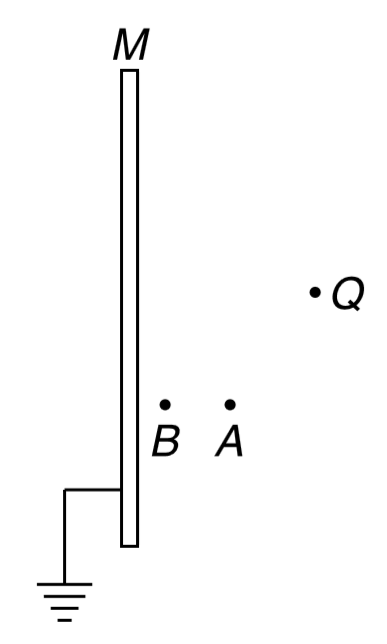Level 1 from ARIHANT PHYSICS Chapter 5 ELECTROSTATICS for Class 12
| Class 12 | PHYSICS |
| Chapter | ELECTROSTATICS |
| ARIHANT PHYSICS | Level 1 |
| Medium | English |
| Academic Year | 2023-2024 |
Question 1
(a) Six equal charges have been placed at the vertices of a regular hexagon. Charge at vertex A is moved to the centre of the hexagon and there it experiences a net electrostatic force of magnitude F. Charge at E is also moved to the centre so as to double the magnitude of the charge at the centre. Calculate the magnitude of the electrostatic force that this central charge experiences now. (b) Three charges of equal magnitude lie on the vertices of an equilateral triangle ABC. All of them are released simultaneously. The charge at A experiences initial acceleration along AD where D is the midpoint of the side BC. Find the direction of initial acceleration of the charge at B.
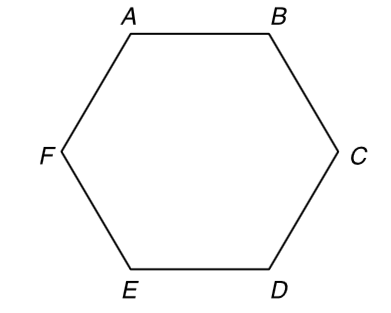
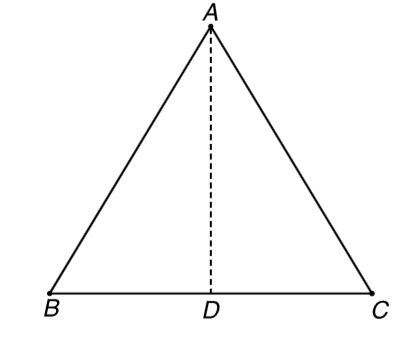 View Solution
View SolutionQuestion 2
Two identical small conducting balls have positive charges q1 and q2 respectively. The force between the balls when they are placed at a separation is F. The balls are brought together so that they touch and then put back in their original positions. Prove that the force between the balls now, cannot be less than F. View SolutionQuestion 4
Let q1 be a positive charge equal to the magnitude of the total charge on all electrons present in 0.9 mg of pure water and q2 be the charge on a 6.35 mg copper sphere from which 0.1% of its total electrons have been removed. Avogadro’s number, NA=6×1023
Molar mass of H2O=18g
Molar mass of Cu=63.5g
(a) Find force between q1 and q2 if they are placed at a separation of 1 km. (b) How does this force compare with the weight of a car having mass of 1200 kg? What conclusion can you draw from the result? View SolutionQuestion 6
Two stiff non conducting rods have length L each and have small balls connected to their ends. The rods are placed parallel to each other and the balls are connected by two identical springs as shown. When each ball is given a charge q, the system stays in equilibrium when it is in the shape of a square. If natural relaxed length of each spring is L/2 find the force constant (k) for them.
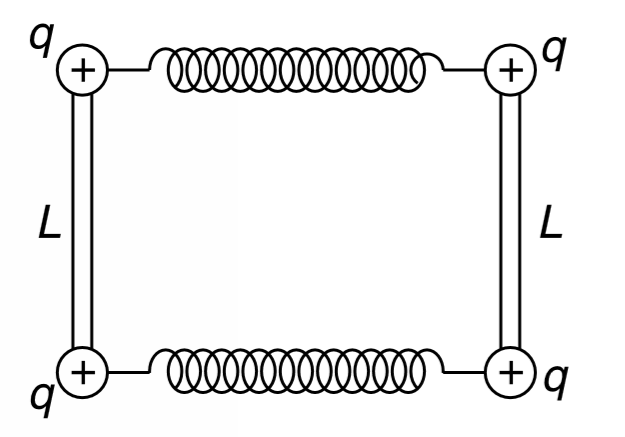 View Solution
View SolutionQuestion 7
Five identical charges, q1 each, are placed at the vertices of a regular pentagon having side length l1. The net electrostatic force on any of the charges due to other four is F1. Find the electrostatic force F2 on any one of the five identical charges, q2 each, placed at the vertices of a regular pentagon having side length l2. View SolutionQuestion 8
A simple pendulum has a bob of mass m which carries a charge q on it. Length of the pendulum is L. There is a uniform electric field E in the region. Calculate the time period of small oscillations for the pendulum about its equilibrium position in following cases:
(i). E is vertically down having magnitude E=mgq
(ii). E is vertically up having magnitude E=2mgq
(iii). E is horizontal having magnitude E=mgq
(iv). E has magnitude of E=q and is directed upward making an angle 45∘ with the horizontalView SolutionQuestion 9
Two identical negative charges are fixed on X axis at equal distances from the origin (O). A particle having positive charge starts at a large distance from O, moves along the Y axis, passes through the origin and moves far away from O in the positive Y direction. Describe qualitatively how its acceleration charges as it moves. Draw a rough graph showing the variation of acceleration (a) vs position of the particle (y). Take the acceleration of the particle to be positive in + Y direction. View SolutionQuestion 10
An electron is either released from rest or projected with some initial velocity in a uniform electric field. Neglect any other force on the electron apart from electrostatic force. Which of the graphs shown in fig could possibly represent the change in kinetic energy of the electron during its course of motion? Explain the situation in each case.
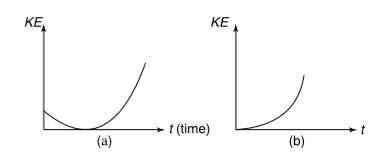
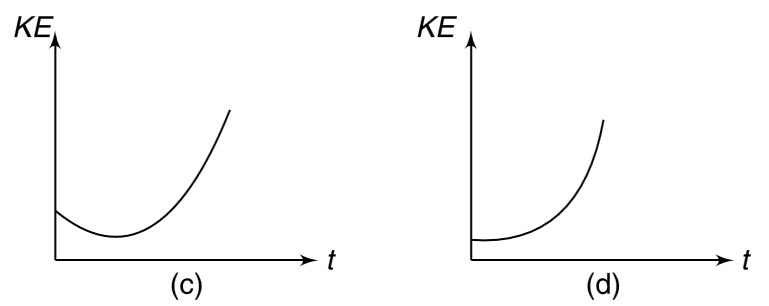 View Solution
View SolutionQuestion 11
In a region of space an electric field line is in the shape of a semicircle of radius R. Magnitude of the field at all point is E. A particle of mass m having charge q is constrained to move along this field line. The particle is released from rest at A. (a) Find its kinetic energy when it reaches point B. (b) Find the acceleration of the particle when it is at midpoint of the path from A to B.
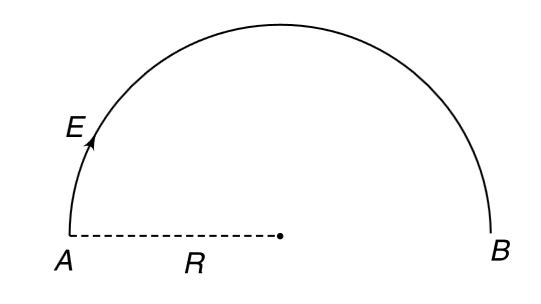 View Solution
View SolutionQuestion 12
Electric field E = – bx + a exists in a region parallel to the X direction (a and b are positive constants). A charge particle having charge q and mass m is released from the origin X = 0. Find the acceleration of the particle at the instant its speed becomes zero for the first time after release. View SolutionQuestion 13
A Sphere of radius R0 carries a volume charge density proportional to the distance (x) from the origin, ρ=αx where α is a positive constant. (a) Calculate the total charge in the sphere of radius R0. (b) The sphere is shaved off so as to reduce its radius. What should be the radius (R) of the remaining sphere so that it contains half the charge of the original sphere? (c) Find the electric field at a point inside the sphere at a distance r lt R. Give your answer for original sphere of radius R0 as well as for the smaller sphere of radius R that was left after shaving off the original sphere. View SolutionQuestion 14
Draw electric field lines for charge distributions given below– (a) Two equal point charges placed at a separation. (b) Two point charges 2q and – q placed at a separation. Describe qualitatively how the lines will appear at a very large distance from the two charges? (c) Three point charges, each equal to + q placed at the vertices of an equilateral triangle.View SolutionQuestion 19
Equipotential lines arising from a static charge distribution has been shown in a certain region of space. (a) Draw the electric field lines starting from point A (b) If a charge is released at A, will it move along the field line passing through A? (c) How much work is done by the electric force if a charge moves from B to C? Is the knowledge of path important in this calculation?
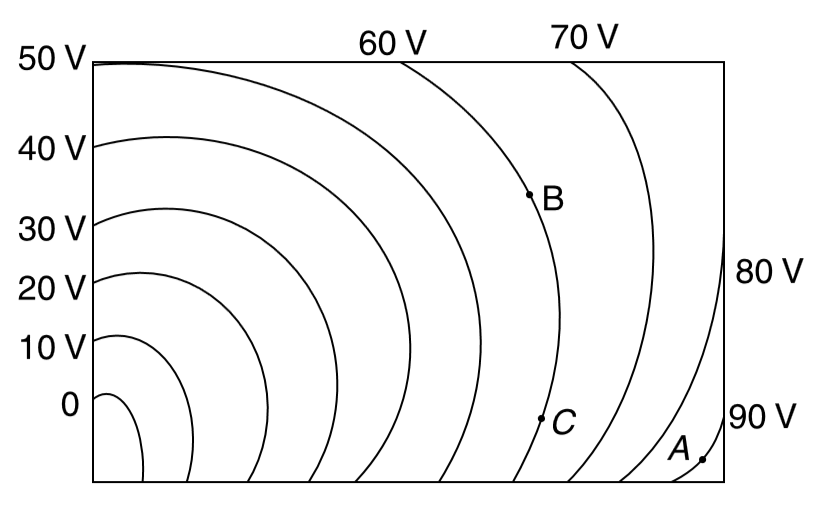 View Solution
View SolutionQuestion 21
Four point charges q, q, q and – q are placed at the vertices of a square of side length a. The configuration is changed and the charge are positioned at the vertices of a rhombus of side length a with – q charge at the vertex where angle is 120∘. Find the work done by the external agent in changing the configuration.
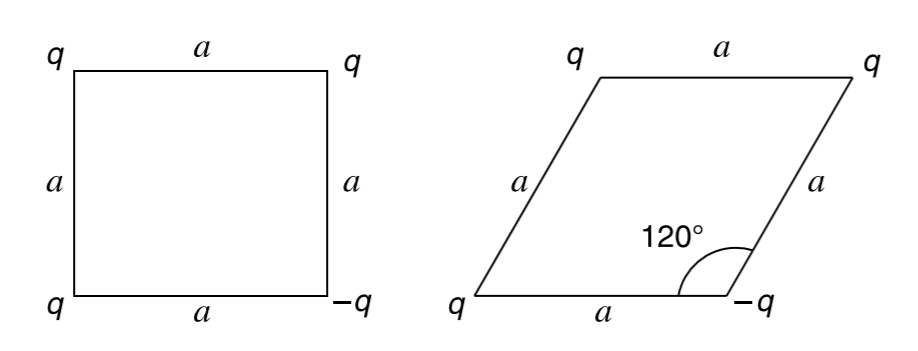 View Solution
View SolutionQuestion 22
There is a ball of radius r having uniformly distributed volume charge Q on it and there is a spherical shell of radius r having uniformly distributed surface charge Q on it. The two spheres are far apart. (a) A point charge q is moved slowly from the centre of the shell (through a small hole in it.) to the centre of the ball. Find work done by the external agent in the process. (b) The two spheres are brought closer so that their centers are separated by 4r. Now calculate the amount of work needed in slowly moving a point charge q from the centre of the shell to the centre of the ball. Assume that charge on one ball does not alter the charge distribution of the other. Does your answers in (a) and (b) differ? Why?
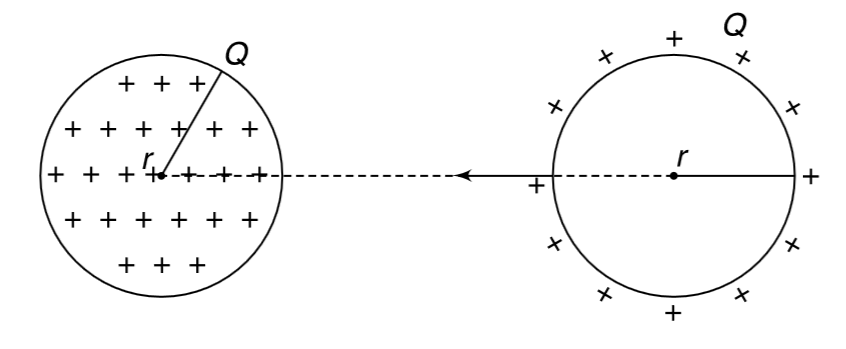 View Solution
View SolutionQuestion 23
A uniformly charged sphere has charge Q. An electron (charge – e, mass m) revolves around it in a circular orbit of radius r. (a) Write the total energy (i.e., sum of its kinetic energy and electrostatic potential energy in the field of the sphere) of the electron. (b) If the time period of revolution of the electron in circular orbit of radius r is T, then find the time period if the orbital radius is made 4r.View SolutionQuestion 24
A uniformly charged sphere has radius R and charge Q on it. A negatively charged particle having mass m and charge – q shoots out of the surface of the sphere with speed V. The minimum speed (V0) for which the particle escapes the attraction of the sphere may be called as escape speed. Will the value of V0 depend on magnitude of q? [Recall that escape speed of a body from the surface of the earth does not depend on its mass]. View SolutionQuestion 25
There is a uniform horizontal electric field of strength E in a region. A pendulum bob is pulled to make the string horizontal and released. The bob has mass m and charge q. (a) Find the maximum angle (θ0) that the bob swings before coming to rest momentarily. (b) Find E if the bob comes to rest when the string is vertical.
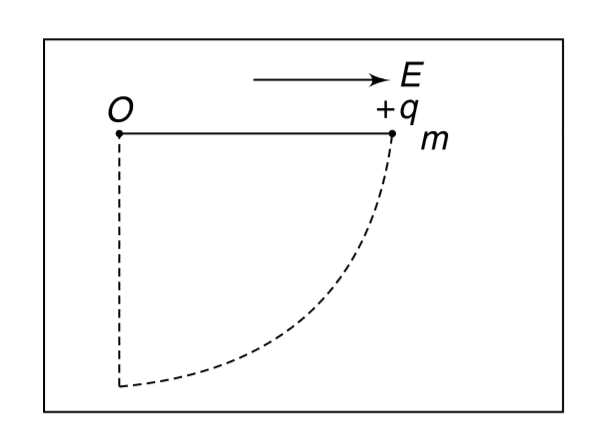 View Solution
View SolutionQuestion 26
A conducting sphere of radius R carries a charge Q. It is enclosed by another concentric spherical shell of radius 2R. Charge from the inner sphere is transferred in infinitesimally small installments to the outer sphere. Calculate the work done in transferring the entire charge from the inner sphere to the outer one. View SolutionQuestion 28
(a). Calculation the largest possible electrostatic energy in 1cm3 volume of air.t he dielectric breakdown of air happens when field exceeds 3×106V/m
(b). A conducting ball of radius 10 cm is placed in distilled water (∈r=80) and charged with a charge Q=2×10−9C. Calculated the energy used up in charging the ball.View SolutionQuestion 29
Three short electric dipoles, each of dipole moment P, are placed at the vertices of an equilateral triangle of side length L. Each dipole has its moment oriented parallel to the opposite side of the triangle as shown in the fig. Find the electric field and potential at the centroid of the triangle
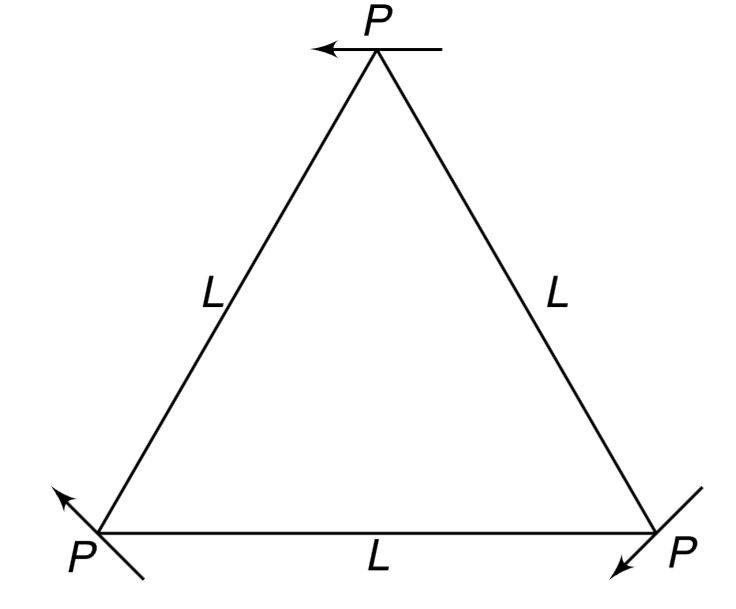 View Solution
View Solution

